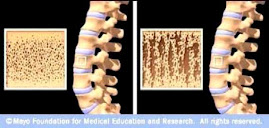A 75-year-old lady who had been taking strontium citrate (680 mg strontium) for three years, had both a DXA scan and a REMS Echolight scan of her bones. When strontium is incorporated into bone, DXA scan BMD results are falsely elevated because strontium has a higher atomic number than calcium and therefore greater X-ray attenuation. The degree to which the BMD results are falsely elevated depends on the dosage of strontium, the number of years taken, how well the strontium is absorbed and incorporated into bone, the individual bones scanned, and the model of DXA scanner used. REMS is unaffected by strontium in bone. These are her results. You can see that the bone strontium effect varies for each bone scanned. The higher numbers are the DXA scan BMD numbers in g/cm2 and the lower numbers are the REMS scan numbers in g/cm2. The percentages are the difference between DXA numbers and the REMS numbers.
L1-L4 0.775, 0.673, 13.16%
L1 0.698, 0.525, 24.79%
L2 0.763, 0.636, 16.64%
L3 0.805, 0.720, 10.56%
L4. 0.815, 0.773, 5.15% (minimum difference)
Femoral Neck Left 0.772, 0.462, 40.16% (greatest difference)
Hip Total Left 0.750, 0.611, 18.53%
Femoral Neck Right 0.736, 0.467, 36.55%
Hip Total Right. 0.828, 0.617, 25.48%
So, the differences between her DXA and REMS scans varied from a low of 5.15% for L4 to a high of 40.16% for the left femoral neck.



No comments:
Post a Comment